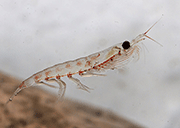
Ruby Newbee's Latest Buzz Hi-Tech Impact On Your Eyes
Should You Stop Using Your Computer?
By Dr Al Sears
When I went to Malaysia, I really started to notice this...
In Malaysia, which most people think is a backwater, developing, jungle-covered, rural country... they all have iPhones.
The first iPhone wasn’t around until 2007. And now smartphones dominate places as far away as Malaysia. When I went there, I saw them all use their iPhones to take pictures then post them on Facebook. The name is a verb now. They say, “Facebook me” instead of “call me” or “e-mail me.”
It’s a great thing that technology is spreading worldwide, and it’s spreading so fast and it has so much improved efficiency. It’s helping improve lives and economic opportunity.
But along with this incredible technology comes some of the problems I’ve been writing to you about. Issues with heart health and brain health and premature aging and the inappropriate use and abuse of technology.
For example, our favorite tech toys like smartphones and tablets give off ultraviolet light that goes directly into our eyes. Those lights are also in LED screens like your TV and computer.
Why is that important? Because UVB light from these devices, which is in the “blue light” spectrum, can damage your eyes when you get too much of it.
That’s why I’m writing to you today. I’m going to show you ways you can protect your eyes from getting too much UVB radiation blue light, so you don’t have to worry about using this incredible new technology.
Here’s what you need to know...
UVA is the radiation that tans your skin. But UVB radiation is stronger. It’s the blue light that gives you sunburn when you’ve been overexposed to sunlight.
At the beach you keep your eyes shut tight to soak up the sun. But you are staring directly into UVB radiation when you watch HD TV or work or play on your computer, tablet or smartphone.
And, the effects of blue light on the retina grow as we age. The reason is that the number of blue light absorbers in the retina increases.
These "blue light absorbers" form as we get older and are called lipofuscin. It’s is a mixture of "metabolic waste" that cannot be cleaned out from the retina. It gathers in retinal pigment epithelium, a layer of cells that maintain the eye’s light receptors.
The two main light receptor cells are rods and cones, and they enable us to see. Lipofuscin generates free radicals as it absorbs more and more blue light, which damage the rods and cones.
When you get too much lipofuscin it can lead to Age-related Macular Degeneration (AMD), the leading cause of blindness in the U.S.
The younger you are, the more protection you have against blue light. We’re flush with antioxidants and antioxidant enzymes that protect your eyes. After the age of 40, the production of these decreases, opening your eyes to possible damage.
Here’s what I tell patients at my wellness center who come to me with strained or impaired vision:
1) First, I recommend that you get as much astaxanthin as possible. It’s a powerful antioxidant that protects your eyes when you are watching HD TV or working at a computer for many hours.
A little-known study proved this. Animals that were given astaxanthin had no damage to their eyes1 even when exposed to a harsh light source equal to that of blue light from a computer.
When you get astaxanthin it acts as an antioxidant and absorbs radiated blue light that can damage the retina. It protects the retina against photo oxidation and loss of photoreceptor cells.
You can get astaxanthin from food. Sockeye salmon has the most astaxanthin of any food: 3.6 mg in six ounces. Coho salmon, red trout, red sea bream, lobster, shrimp, crawfish, crabs, lobster and salmon roe also have astaxanthin.
You want to eat wild-caught — not farm-raised — salmon. They get their astaxanthin by feeding on microalgae, the natural source from the open ocean.
But if you don’t like seafood, I recommend supplementing with 2 mg per day. However you can increase the dose to 8—10 mg if you want to use it for great anti-inflammatory eye benefits.
2) Second, did you know that your eyes are hungry for as much CoQ10 that they can get? Usually when I talk to you about CoQ10, it’s about the great benefit to your heart and how it gives you a boost of energy. But it’s also the main source of energy for you most energy-hungry organs, like your eyes.
And, CoQ10 protects the cells in your retina from all kinds of radiation damage, including overexposure to the sun’s rays.2 A Columbia University study showed that lower levels of CoQ10 meant your retinas may not produce enough energy to protect themselves from damage like the kind you get from blue light.3
The best way to get plenty of CoQ10 is to hunt for wild animals. Slice them open while they are still warm and cut out their liver, kidney, heart, and other internal organs. Then throw them on the grill and enjoy.
However if you don’t like eating internal organs, the closest thing to eating a wild animal is grass-fed meat. I grew up eating grass-fed beef, and still enjoy it today. Grass-fed beef has the most CoQ10 that you can get in the universe. It’s in your supermarket. Look for grass-bed beef, bison, and other meat.
But it’s difficult the get all the CoQ10 you need for eye health from food alone. So I recommend that you take supplements. Many of the powder and tablet forms of it are worthless. Stay away from them because they won’t get absorbed into your cells.
To supplement take at least 50 mg of the ubiquinol form of CoQ10 daily. Don’t take the ubiquinone version; it is weaker and does not absorb as well as the ubiquinol CoQ10.
To Your Good Health,
Al Sears, MD
1. Li Z, Dong X, Liu H, Chen X, Shi H, Fan Y, Hou D, Zhang X. "Astaxanthin protects ARPE-19 cells from oxidative stress via upregulation of Nrf2-regulated phase II enzymes through activation of PI3K/Akt." Mol Vis. 2013;19:1656-66.
2. Lulli M, Witort E, Papucci L, Torre E, Schiavone N, Dal Monte M, Capaccioli S. "Coenzyme Q10 protects retinal cells from apoptosis induced by radiation in vitro and in vivo." J Radiat Res. 2012;53(5):695-703.
3. Qu J, Kaufman Y, Washington I. "Coenzyme Q10 in the human retina." Invest Ophthalmol Vis Sci. 2009;50(4):1814-8.

REVIVE YOUR
CARDIOVASCULAR POWER

SPINAL CHORD SUPPORT WITH KRILL
Click HERE to view Primal Force Products catalog.
Click HERE to view Pure Radiance Products catalog.
This Article is Provided by Dr Al Sears, MD











